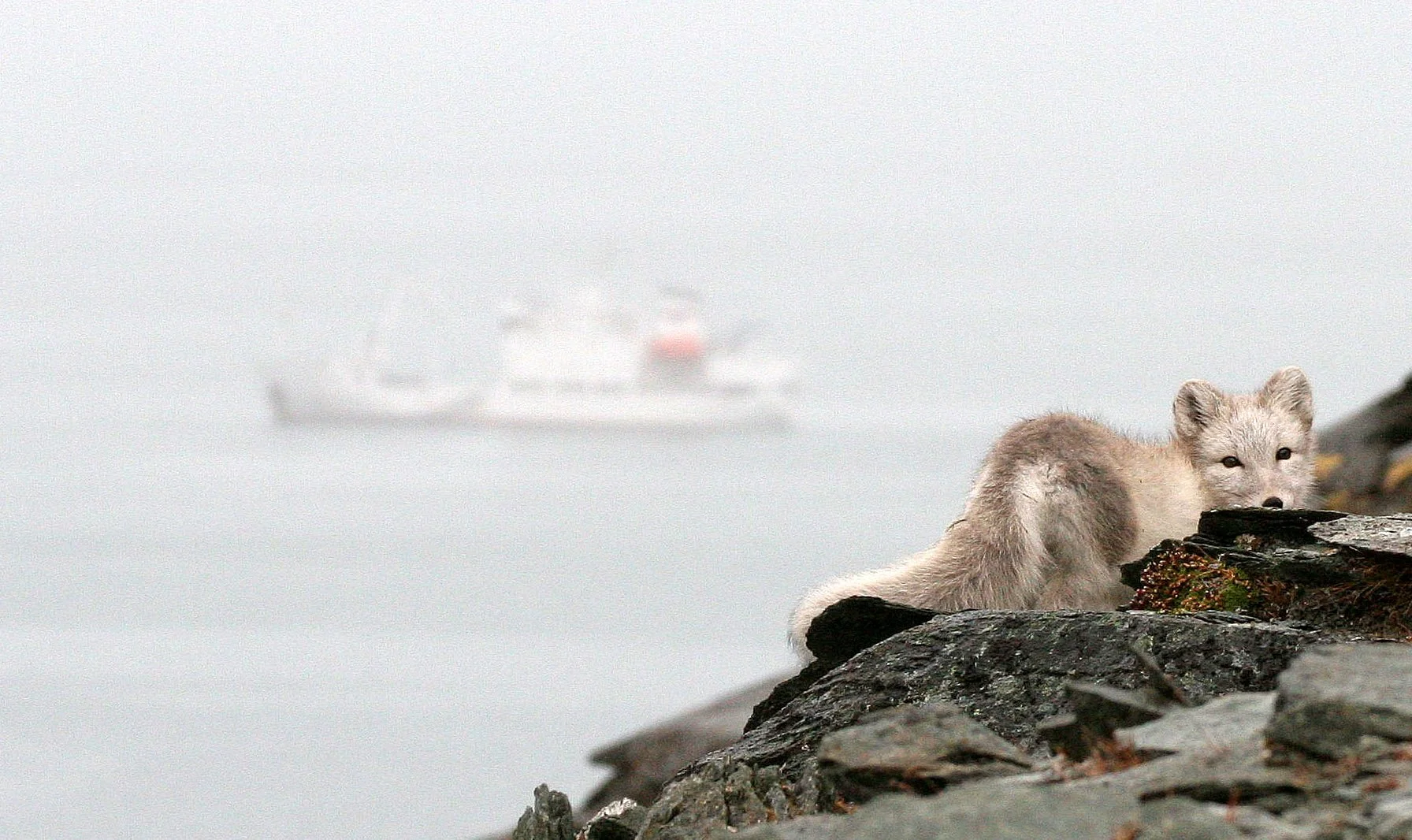
The Arctic fox (Vulpes lagopus), also known as the white fox, polar fox, or snow fox, is a small fox native to the Arctic regions of the Northern Hemisphere and common throughout the Arctic tundra biome. It is well adapted to living in cold environments, and is best known for its thick, warm fur that is also used as camouflage. It has a large and very fluffy tail. In the wild, most individuals do not live past their first year but some exceptional ones survive up to 11 years.
The Arctic fox preys on many small creatures such as lemmings, voles, ringed seal pups, fish, waterfowl, and seabirds. It also eats carrion, berries, seaweed, and insects and other small invertebrates. Arctic foxes form monogamous pairs during the breeding season and they stay together to raise their young in complex underground dens. Occasionally, other family members may assist in raising their young. Natural predators of the Arctic fox are golden eagles,[10] Arctic wolves, polar bears, wolverines, red foxes, and grizzly bears.
The Arctic fox has a circumpolar distribution and occurs in Arctic tundra habitats in northern Europe, northern Asia, and North America. Its range includes Greenland, Iceland, Fennoscandia, Svalbard, Jan Mayen (where it was hunted to extinction)[39] and other islands in the Barents Sea, northern Russia, islands in the Bering Sea, Alaska, and Canada as far south as Hudson Bay. In the late 19th century, it was introduced into the Aleutian Islands southwest of Alaska. However, the population on the Aleutian Islands is currently being eradicated in conservation efforts to preserve the local bird population.[1] It mostly inhabits tundra and pack ice, but is also present in Canadian boreal forests (northeastern Alberta, northern Saskatchewan, northern Manitoba, Northern Ontario, Northern Quebec, and Newfoundland and Labrador) and the Kenai Peninsula in Alaska. They are found at elevations up to 3,000 m (9,800 ft) above sea level and have been seen on sea ice close to the North Pole.
The Arctic fox is the only land mammal native to Iceland. It came to the isolated North Atlantic island at the end of the last ice age, walking over the frozen sea. The Arctic Fox Center in Súðavík contains an exhibition on the Arctic fox and conducts studies on the influence of tourism on the population. Its range during the last ice age was much more extensive than it is now, and fossil remains of the Arctic fox have been found over much of northern Europe and Siberia.
The color of the fox's coat also determines where they are most likely to be found. The white morph mainly lives inland and blends in with the snowy tundra, while the blue morph occupies the coasts because its dark color blends in with the cliffs and rocks.
The Following subspecies have galleries on this page:
Spitzbergen (Iceland) Arctic Fox (Vulpes lagopus fuliginosus)
Bering Island Arctic Fox (Vulpes lagopus beringensis)
Spitzbergen (Iceland) Arctic Fox (Vulpes lagopus fuliginosus) - Some suggest subspecies Vulpes lagopus spitzbergensis). Common on Svalbard.






























































































Bering Island Arctic Fox (Vulpes lagopus beringensis) - two spotted on Bering Island while in the Commander Islands, Russia



































Medny Island Arctic Fox (Vulpes lagopus semenovi) - Seen very briefly but no images other than fresh tracks!


